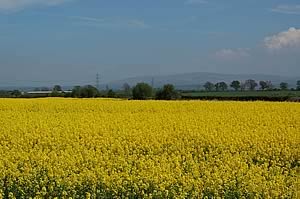| 09/02/09
Managing this year’s beleaguered oilseed rape crops will test even the most experienced oilseed growers, but crops still have the potential to make a full recovery advises Richard Elsdon, Technical Manager for United Oilseeds.
 |
The wet winter conditions that followed last year’s late cereal harvest have resulted in many crops of oilseed rape looking small, poorly established and under-developed. Some crops will have to been re-drilled to avoid total failure, but in many areas growers have been surprised by the sheer tenacity of their crops to survive the recent harsh winter weather.
“Growers should not lose hope in their oilseed crops,” Mr Elsdon believes. “There is still every chance that large areas will fully recover and with the right level of management, crops still have every chance to reach their full yield potential.
“Looking at crops across the UK in early February shows that many plants have managed to produce four to five true leaves. These are no more than five to seven centimetres across in many cases and in some fields plant populations are down to 10 to 15 per square metre. But careful management will ensure that even these plants can still go on to produce reasonable yields.”
To make life more difficult, waterlogged ground conditions have prevented many crops from receiving scheduled fungicide treatments with many crops beginning to show phoma lesions. Plants that are showing signs of infection will need to be treated as soon as the ground will carry a sprayer Mr Elsdon advises.
“Farmers who are thinking of reducing their inputs should re-consider. This is not the season to be cutting back on crop protection and application rates if anything will need to be increased to make up for lost time.”
Mr Elsdon also warns farmers to re-evaluate nitrogen application rates. “Backward looking crops should only be given a spoonful of nitrogen. About 20-30 kilos per hectare should be enough until the weather improves and crops show signs of taking off. The tiny plants cannot utilise any more at present. Once crops reach a height of 30-45 centimetres they will benefit from the appropriate amount of sulphur and a main dose of nitrogen to ensure optimum canopy cover.”
 Monsanto Launches New Ag-Chem Resource Centre Monsanto Launches New Ag-Chem Resource Centre
 Tightening Cross-Compliance Policing Prompts Ag-Chem Usage Warning Tightening Cross-Compliance Policing Prompts Ag-Chem Usage Warning
 Recommended Oilseed Varieties for Northern UK - New SAC List Published Recommended Oilseed Varieties for Northern UK - New SAC List Published
|


